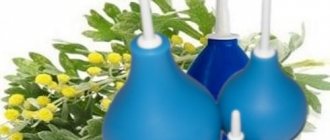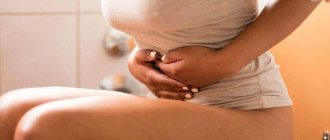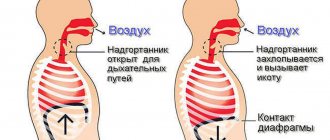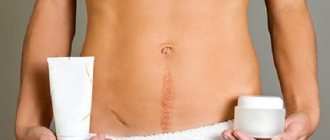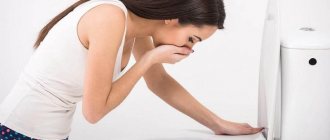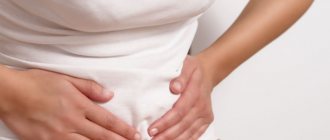In medicine, a syringe is understood as a special instrument used for pumping out or supplying various liquids, the functions of which include douching, that is, irrigating with medicine or washing the vagina, washing, irrigating or douching of the rectum and colon, introducing medications into them, and rinsing the nasal passages.
If such an instrument is chosen incorrectly, it is of poor quality or is not of the type needed in a particular case, it may happen that the treatment will not be completed in full, the results will have to wait longer, or positive changes will not be achieved at all. That is why it is necessary to know what types of syringes exist and what each of them is intended for in medical practice. You should not use used devices of this type, since there are several purposes for their use, and it may not be possible to properly sterilize the device at home.
What is a gynecological douche, how does it differ from the standard one?
A gynecological syringe is an auxiliary medical instrument designed for douching. Douching is a method of therapy that involves targeted local effects on the vagina and cervix. The main objectives of the procedures are disinfection, normalization of microflora, removal of pathological contents and ejaculate, as well as medicinal effects on the genitals.
How to douche correctly? Useful advice from a gynecologist.
The gynecological syringe differs from the standard syringe in the features of the device. The device, as a rule, consists of two parts: a reservoir for the solution used and a tip for administering the product. The nozzle of a gynecological syringe is smooth and somewhat curved, which allows you to take into account the physiological characteristics of the structure of the female vagina and avoid discomfort during procedures.
There are several types of syringe attachments. The standard one has one hole at the end of the tip and involves a local effect, for example, on the cervix. The irrigation nozzle is distinguished by the presence of perforations along its length. The liquid is sprayed out in several jets, which allows you to evenly irrigate the vaginal walls.
Methods for storing and cleaning syringes after manipulation
Before each time you use the syringe, it should be thoroughly disinfected so as not to introduce infection into the uterine or intestinal cavity. Disinfect the tip by boiling it in water for 10 minutes or more. The entire syringe can be immersed in a 3% hydrogen peroxide solution for an hour and a half to disinfect. After hydrogen peroxide, the device should be rinsed in saline solution.
If the irrigation solution is not used to its fullest extent, its residues cannot be left in the device bulb for a long time. The maximum time the liquid remains inside the device is 30 minutes. After using the syringe, the remaining contents should be poured out of it, the inside should be rinsed well in hot water, and then dried thoroughly. The device should be stored in a closed place at a temperature of 5 to 25 degrees.
In what cases is a syringe used?
Douching is an effective treatment method that allows you to target lesions in a targeted, targeted and local manner. This speeds up recovery, improves the results of therapy and prevents side effects that develop when using other forms of drugs, for example, tablets that affect not only the reproductive system, but also the gastrointestinal tract, liver, and kidneys.
Doctors recommend douching in the following cases:
- colpitis;
- vaginitis;
- cervical erosion;
- vaginosis;
- cervicitis;
- urethritis;
- cystitis;
- candidiasis (thrush);
- contraception before or after unprotected sexual intercourse (subject to unwanted pregnancy);
- adnexitis.
The benefits and harms of douching
Although douching has been used in gynecology for a long time, in the 21st century some doctors view it negatively. The fact is that when irrigating the vaginal mucosa, its acid-base balance is in any case disturbed, and antiseptic solutions kill not only pathogenic microorganisms, but also beneficial microflora.
In a healthy woman who follows the simplest rules of hygiene, the vagina itself cleanses itself of various secretions and blood clots after menstruation. It is enough to take a shower once or twice a day, and the smell will be almost imperceptible, and it is impossible to completely get rid of it in any case.
If you regularly douche to clean the vagina, and even use solutions of soda, potassium permanganate, hydrogen peroxide, then over time the colonies of beneficial lactobacilli will no longer be restored, the mucous membrane will begin to dry out, microcracks will appear on it, and in severe cases - ulcers. Therefore, therapeutic douching is carried out in courses of 5–7 days (sometimes up to 10), with a mandatory break between them of at least 20 days. You are allowed to do 1-2 douches per day.
Only a doctor can determine whether a woman needs douching, prescribe a means for irrigation and set the duration of the course.
Douching is usually prescribed for:
- thrush;
- bacterial vaginosis;
- colpitis;
- inflammation and erosion of the cervix;
- chronic cystitis;
- vaginal dysbiosis;
- fibroids.
Women also douche before tamponing for cervical erosion and before gynecological operations.
It is strictly forbidden to douche:
- pregnant women, as the procedure can harm the fetus or cause a miscarriage;
- within 40 days after childbirth or abortion, while cracks and stitches heal;
- during menstruation, when there is a high probability of pathogenic microorganisms entering the cervix.
- It is not recommended for women to douche during menopause, since at this time the vaginal mucosa already becomes dry.
How to use a syringe correctly?
How should you use a syringe? The douching procedure includes several stages:
- Disinfect the device. Find out how to do this from the attached instructions. Some syringes can be boiled for 10 minutes, others are immersed in antiseptic solutions (hydrogen peroxide) for several minutes.
- Connect the component devices.
- Prepare the solution in accordance with the instructions supplied with the drug and taking into account the recommendations of the attending physician.
- Fill the device reservoir with the prepared solution.
- Find a comfortable position.
- The tip can be lubricated with Vaseline for comfortable insertion. Gently spreading the labia with your free hand, place the nozzle into the vagina to a depth of about 3-5 centimeters.
- Slowly and without strong pressure, insert the solution into the vagina by squeezing the reservoir.
- After complete insertion of the product, remove the tip and squeeze the vagina so that the contents linger inside and take effect.
- After a minute or two, relax and the solution will come out naturally.
- Wash yourself with baby soap, dry your external genitalia, and put on clean underwear.
- Wash and disinfect the syringe.
The treatment regimen is selected by the doctor individually. But usually the full course lasts no longer than 7-10 days. In the first two to three days, procedures are carried out in the morning after waking up and in the evening before bed. Next, the frequency is reduced to once (the best option is at night). After completing treatment, your doctor may recommend douching once a week for a month to maintain and consolidate the results.
how to douche correctly (part 2)
Choose a suitable comfortable position. The first option is to sit on the toilet with your legs spread wide apart. But in this case, you will have to forcefully squeeze the vagina to avoid premature removal of the solution. The second option is to lie in the bath with your legs raised to your chest and your knees bent. In this position, the product will not flow out immediately after the procedure, especially if you raise the pelvis and tense the vaginal muscles.
Enema bulb - selection and use
In order to give an enema, and even to yourself, and even at home, you will need a special device.
Usually this thing is called an Esmarch mug, it is the Esmarch mug that is a kind of classic, a generally accepted device that allows you to correctly give yourself (or not only yourself) an enema - but not all people have an Esmarch mug.
But such a simple thing with which you can do approximately the same thing and which is called a pear or a syringe - this is something that can be found in almost any home. And doing the procedure with its help is also more than realistic. Moreover, giving her an enema is no more difficult.
Selection and Application
Sometimes a bulb/syringe is used simply because Esmarch’s mug is missing, but sometimes it is actually more convenient.
This is, for example, when it is necessary to do a small enema, no more than half a liter. You can generally find 50 gram pears that are suitable even for very young children.
But for large volumes, when a cleansing enema is needed, Esmarch’s mug will be much more optimal.
There are disposable syringes that make it even easier to do an enema at home, since they already contain everything you need. All that remains is to do the enema, and then throw away the now unnecessary syringe, so it’s easy to use. In general, you can never guess when you will need to do an enema, so you should at least have a standard pear at home.
You can choose an option with a plastic, silicone or rubber tip, everything to your taste. But if you need to do the cleansing procedure quite often, then perhaps the Esmarch mug will still be more convenient, because at least its volume is larger and this cleansing procedure is carried out easier and more correctly with its help.
Therefore, sometimes it is better to use it.
Preparation
Before you do an enema at home using a bulb, you need to wash it thoroughly with soapy water, without ignoring its tip. After this, you need to make a liquid that will be added to this container - and it can be simple water, or maybe, for example, a glycerin solution.
If it is simple water, then it is important not to overdo it with the temperature regime, do not make the temperature more than 35 degrees.
When using a glycerin solution, it is equally important to do everything correctly in terms of proportions - you only need a tablespoon of glycerin for about half a liter of water, then everything will be correct, an enema prepared at home will be optimal.
Staging
When the syringe/bulb is ready, you need to understand how to do the procedure. First you need to prepare the space where the procedure will be carried out. The surface must be horizontal and certainly covered with oilcloth or something similar. Next, the solution is poured into the pear. This is done by pressing the bulb - the air comes out, after which you can draw a liquid.
Then you need to press the device a little so that the air comes out of it. If you are doing a pear enema to yourself at home, now you need to find the position that will be most convenient and comfortable for you. This can be a fetal position, it can be squatting or all fours - entirely your choice.
The tip of the device is lubricated with Vaseline so as not to cause unnecessary injuries when inserted. Then the buttocks are slightly moved apart, and the tip of the syringe/bulb is inserted approximately three centimeters. The liquid is introduced slowly, completely. You need to keep it inside for about 10 minutes, and then you can go to the toilet.
Source: https://bolit-zheludok.ru/klizmy-i-slabitelnye-ot-zapora/grusha-dlya-klizmy-vybor-i-primenenie.html
Contraindications
Douching has contraindications, which include uterine bleeding, exacerbations of chronic diseases of the reproductive system, menstruation, the postpartum period (until the end of lochia), the period after an abortion or curettage (1.5 - 2 months), acute inflammation of the genital organs.
Uterine bleeding
It is not recommended to use a douche during pregnancy, as this effect can increase the contractile activity of the uterus and provoke premature birth or miscarriage. There are no procedures in place to maintain cleanliness and hygiene.
Enema dimensions volumes
An enema is an ancient medical procedure for washing out the large intestine. Even 200 years ago, it was prescribed to almost every patient, including those with high fever and mental disorders. Modern doctors limit the types of enemas to clear indications, require compliance with rules and consideration of restrictions.
Scientific justifications make it possible to include enema in the complex therapy of many diseases and in the cleansing system. The manipulation is carried out in a hospital by a trained nurse and at home. Special skills are required when giving an enema to a child.
Classification of enemas by purpose
The action of enemas is based on a simple principle - the effect on intestinal functions. The main digestion is provided by microorganisms living in the large intestine.
They break down food residues with enzymes and regulate their absorption. Everything unnecessary turns into slag masses and is thrown out by the body with feces.
The lower section stores waste and eliminates it through a complex process of defecation. An enema speeds up the cleansing process.
For medicinal purposes, another equally important property of the mucous membrane of the rectal canal is used - to quickly absorb liquid, medications and nutrients. It has been proven that in terms of the rate of absorption, rectal administration is in second place after the intravenous route, so it is advisable to use enemas in cases of damage to the upper digestive tract, for intestinal therapy.
The effect depends on the correct selection of the type of procedure. Enemas can ensure the entry of substances into the body and, conversely, increase the exit through feces, so they can be “introducing” and “releasing.”
For manipulation, you need a set of devices that help the fluid flow into the intestine under pressure. Natural emptying serves as an excretory mechanism.
To enhance the effect, a siphon is used when the injection occurs under a certain increased pressure (in medical devices the standard indicator of the device is set), and for output it is reduced.
- according to the method of production;
- according to the planned goal;
- by volume and composition of the injected liquid;
- by the difference in solution temperature.
Important! Enema devices must include a container for liquid of large or small volume, a tube through which the solution will flow into the intestines, and nozzles that allow you to easily insert the end into the anus. Some modern devices are equipped with a dispenser for long-term, slow results. It regulates how many ml per minute should be infused. A plastic catheter is used instead of a tube.
A rubber bulb for an enema is called a syringe. For children, small pears of 30-70 ml with a soft short tip (spout) are used.
For adults, depending on the purpose, large pear-shaped syringes with a long dense tip, Esmarch mugs or combined heating pads with a tap switch are suitable.
Depending on the effect on a person and the purpose of the procedure, several types of enemas are distinguished.
Cleansing - considered the most popular because they are easy to carry out and use at home. Indicated when it is necessary to completely empty the intestines:
- before a scheduled or emergency diagnostic examination (ultrasound, sigmoidoscopy, anoscopy, colonoscopy), surgery, childbirth;
- from decay products of pathogenic bacteria, toxins that support intestinal infection and intoxication of the body;
- from toxic substances of a toxic nature that caused poisoning;
- with low peristalsis and prolonged constipation;
- as a preventive measure - to prevent slagging.
Laxatives - similar in name to cleansing ones, are also needed for constipation, but their peculiarity is the activation of the natural mechanism of defecation while maximally preserving the intestinal flora.
Nutrients are administered by drip or in the form of microenemas - necessary if it is impossible to get food through the mouth and stomach:
- temporarily in the postoperative period after removal of the esophagus, part of the stomach and intestines;
- in a comatose state;
- with significant loss of water;
- in the treatment of exhaustion.
Therapeutic - doctors use the prescription of rectal administration of drugs through enemas for children and adults to directly influence the lower parts of the rectum and sigmoid colon in the treatment of colitis, proctitis, proctosigmoiditis, paraproctitis, hemorrhoids, tumors, Crohn's disease. Newborns and infants are supplied with medications in this way.
Based on the volume of solution, enemas are divided into the following types:
- cleansing - 1.5-2 l;
- microenemas - up to 0.1 l;
- siphon - up to 2 liters per infusion, 20 liters for the entire session.
What forms of enemas are used at home?
Before performing an enema at home, you need to consult a doctor and read methodological literature on the rules of the manipulation. Treating the procedure as a safe manipulation, a tool for combating excess weight, significantly harms the state of intestinal digestion, so doctors warn about the need to take into account contraindications.
Depending on the type of devices at home, an assistant or additional device is needed. For example, giving yourself a pear-shaped enema with a volume of 750 ml is inconvenient. Some of the liquid will remain in the container.
But you can adapt a cabinet handle, the back of a chair or other parts of furniture as a supporting tripod to provide the required height for an Esmarch mug or a combined heating pad.
The greater the distance between the vessel and the body, the higher the pressure of the injected fluid. Inserting the tip is easy.
For the purpose of cleansing, it is enough for adults to select a volume from 0.5 to 2 liters. Babies are administered 25-50 ml with a syringe. For atony, liquid at room temperature is required. If stool retention is caused by spasm, the solution should be moderately warm (up to 40 degrees).
A prerequisite is clean hands. In hospitals, nurses use sterile latex gloves.
Before any enema, you need to prepare boiled water and wash the tip with soap. If the device is used by different family members, it is recommended to boil for 15 minutes (for a baby syringe - 30 minutes). For better glide, it is lubricated with Vaseline or fatty cream.
You need to lie on your left side, bend your knees, try to relax your stomach. The insertion depth for an adult should be at least 5 cm. In this case, the tip should not be pushed in with force. The tube enters gradually, there should be no pain.
When you open the tap, you feel a slow flow of liquid.
Important! Do not force the flow rate of the solution. This leads to intestinal spasms and pain.
After the procedure is completed, the tap is turned off and the tube is removed from the anus. The urge to defecate occurs as soon as fluid enters. You need to wait 10 minutes and lie on your back. Typically, the effect of water solutions occurs immediately, drugs and herbal infusions - after absorption, after 15-30 minutes, oil-based substances - after 5-10 hours.
It is better to use enemas with oil and saline solutions as laxatives.
It is more convenient to do them before bed, since the emptying effect is expected after 8-10 hours. The temperature should be warm. The volume of liquid is about a glass. Before therapeutic and nutritional enemas, complete cleansing is necessary.
Source: https://morewomen.ru/info/klizma-razmery-obemy/
Important Rules
If you use a syringe, follow a few rules:
- Do not do douching yourself without consulting a specialist. The procedures should be prescribed by a gynecologist if indicated.
- Be sure to disinfect the device before each use to avoid pathogenic microorganisms entering the genitals. Parts in contact with the body are regularly disinfected. Hands should be washed with soap every time.
- Do not inject the solution under pressure. To control the pressure, squeeze the tank gently. In addition, you need to relax as much as possible for even distribution.
- Do not use an enema for douching, especially one already used for its intended purpose.
- If you use a syringe, do not use it for other purposes, for example, for oral irrigation or enemas.
- Typically, water is used to prepare solutions, and it should have a comfortable temperature of 35-37 degrees. Hot liquid can cause burns of delicate mucous membranes, and cold liquid can cause discomfort.
Types and characteristics of the tool
The main difference between syringes is the type of their tips, which can be soft for type A (made of polyvinyl chloride) and hard for type B (made of plastic). A special gynecological type - an irrigation syringe - has additional holes on the sides of the tip. The material from which the main part of the device is made is usually polyvinyl chloride, plastisol material or rubber.
When choosing a device, you should pay attention to some details. For example, a good syringe should not have an unpleasant chemical odor, the material from which it is made should be smooth and uniform, non-porous, the tip must be made according to precise patterns so that its structure is free from any roughness, layers, etc., which could injure delicate mucous membranes shell when used. The device itself must be strictly symmetrical, without distortions. When releasing the solution with its help, the latter should not be colored.
Most of these devices are made today from polyvinyl chloride. If the material for syringes is of poor quality, then the device itself will turn out no better - it will emit a chemical or masking “fragrant” odor and be painted. In addition, the porosity of the texture of the material can retain some components of the medicine collected in the syringe, which will worsen the effectiveness and quality of treatment. Moreover, such a device will be very difficult to clean later.
Syringes, depending on the types and materials of manufacture, are intended for the following specific purposes:
- with soft tips (type A) – they suck out fluids after surgical operations from various body cavities, and are able to rinse cavities for therapeutic and prophylactic purposes;
- with hard plastic tips or with tips made of polyvinyl chloride (type B) - used for administering enemas or microenemas, can be used as an instrument for irrigating the vagina;
- irrigation – gynecological, used for therapeutic and prophylactic intravaginal irrigation.
What products are used for douching?
The choice of product used for douching depends on the goals of the procedures. For bacterial infections, topical antibiotics are used. For thrush, antifungal drugs are prescribed. Also, for candidiasis, a non-concentrated weak soda solution can be used.
Soda solution
Antiseptics such as Chlorhexidine and Miramistin are recommended for disinfection. Anti-inflammatory and wound-healing agents (Malavit) are prescribed. Folk remedies that are effective against inflammation are popular - decoctions of medicinal herbs (chamomile, sage, oak bark, coltsfoot, string, calendula, celandine). If the purpose of douching is contraception, spermicidal agents are used.
Any means are used after consulting a doctor.
Douching for various diseases
The most common means for douching:
- Soda - for thrush (candidiasis) and vaginal dysbiosis. The solution for douching is prepared in the same way as for conception. Course – 5–7 days.
- Miramistin is a pharmaceutical drug with antibacterial and antifungal action. Prescribed for thrush.
- Chlorhexidine is a pharmaceutical preparation, ready for use. Prescribed for bacterial vaginosis, colpitis, and used in pediatric gynecology.
- Hydrogen peroxide is an antibacterial agent that relieves itching and burning due to thrush. The substance decomposes very quickly in light and hot water, so the solution must be used immediately after preparation. Proportions: 30 g of peroxide (3%) per 90 g of water.
- Potassium permanganate is an effective antiseptic, but dries out the mucous membrane. For douching, 0.2 g of potassium permanganate is dissolved in 200 g of water (the liquid should be pale pink).
- Chamomile – against thrush. A tablespoon of dry herb is brewed in 300 g of water: boiled for 5 minutes or infused in a thermos for 3-4 hours, then filtered.
- Oak bark - against thrush. Fill a full teaspoon with 300 g of water and boil for half an hour. Douching with a mixture of chamomile and oak bark decoctions in a 1:1 ratio is allowed.
- Celandine is an antibacterial but toxic agent that must be used with extreme caution. Helps with thrush, cervical erosion and fibroids. It is best to add a pinch of dry herb to a decoction of chamomile or nettle.
- Nettle is a blood purifier. For cervical erosion, one tablespoon of herb is brewed in 300 g of water.
- Honey is a wound healing and regenerating agent. A teaspoon of honey is added to a cooled decoction of herbs for cervical erosion and fibroids.
- Aloe juice - used for cervical erosion. A teaspoon of juice is added to the cooled herbal decoction or dissolved in 200 g of warm boiled water.
Douching is not a hygienic, but a medical procedure. If you experience itching, burning, or suspicious vaginal discharge, you should definitely consult a doctor. Self-medication in such cases can seriously harm your health.
Sincerely, Elena Minakova is a practicing obstetrician-gynecologist.
Using a syringe for prevention: is it advisable?
Some women periodically douche to prevent infectious and inflammatory diseases. But most doctors argue that this is not entirely correct and impractical.
Douching: pros and cons - video from a specialist.
The vagina has its own set of safe microorganisms and has the ability to cleanse itself and maintain local immunity. If you interfere with the natural environment of the genital organs, this will provoke a disruption of the microflora, which will lead to a change in the balance of microorganisms: pathogenic ones will begin to multiply, and harmless and beneficial ones will die. That is, the situation will worsen, and instead of prevention, you will achieve a deterioration in women’s health.
By using a syringe correctly, you can get rid of symptoms and even completely cure the disease. Follow the rules and carry out treatment under the supervision of a doctor.
(votes: 2, rating: 4.00 out of 5)
Share the news on social networks
Ask a Question! You have questions? Feel free to ask any questions! And our staff specialist will help you. Go>>
- Recommended Articles
- What is dysmenorrhea?
- Ovarian dysfunction
- How to do douching with soda?
« Previous entry
Douching for conception
There is an opinion that douching with soda promotes conception. This is only true if a woman cannot become pregnant due to the increased acidity of the vaginal environment. Soda is alkalizing, which increases the chances of sperm survival and subsequent fertilization of the egg slightly.
Home douching with a soda solution is usually done from the 11th to the 18th day of the menstrual cycle and only as prescribed by a doctor. Half a teaspoon of soda is quenched in 50–70 ml of boiling water, stirred thoroughly so that not a single grain remains and topped up to 250 ml with cool water. The procedure is carried out half an hour before intercourse.
